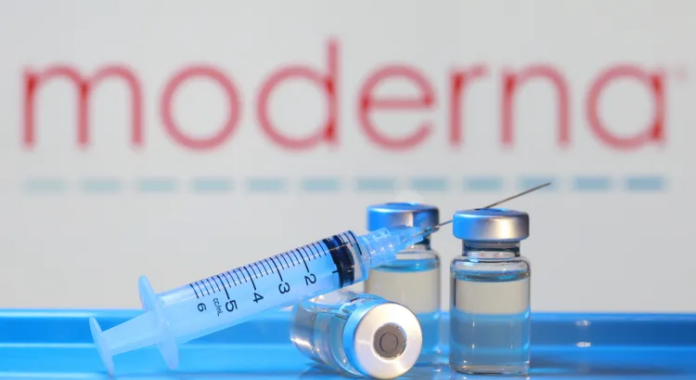Moderna reported a surprise third-quarter profit on Thursday, driven by cost cutting and higher-than-expected sales of its COVID-19 vaccine, even with low revenue from its new respiratory syncytial virus shot.
Shares of the Cambridge, Massachusetts-based company were up nearly 5% to $54.22 in early trading.
Moderna posted a profit of $13 million, or 3 cents a share, for the quarter, compared to a loss of $3.6 billion a year ago. Analysts had expected a loss of $753 million, or $1.90 a share, according to LSEG data.
Its Spikevax COVID vaccine brought in sales of $1.8 billion, up 3.5% over the previous year and handily beating analysts’ average expectations of $1.38 billion. The company said it benefited from higher sales in the U.S. following an earlier launch of its COVID vaccine this year.
The U.S. Food and Drug Administration approved updated versions of Spikevax and rival vaccine Comirnaty from Pfizer and BioNTech nearly three weeks earlier than it did in 2023.
“We shipped more in the early days and were able to ensure all healthcare providers had access to COVID vaccines,” said Chief Financial Officer James Mock in an interview.
Moderna still expects to make less from COVID vaccine sales this year than it did in 2023, however, and reaffirmed its 2024 sales forecast of $3 billion to $3.5 billion. The company brought in sales of nearly $7 billion in 2023.
“This guidance appears more than achievable based on anticipated Q4 COVID vaccine sales,” TD Cowen analyst Tyler Van Buren said in a note.
Mock said during an investor call that Moderna expected between $200 million and $500 million in overall sales next quarter, assuming COVID vaccination rates are flat or down as much as 10% compared to last year.
He added that the company expected to hit the lower end of this sales range if Moderna’s market share for COVID vaccines remained the same and there was no uptick in sales of its RSV shot.
Sales of Moderna’s new RSV vaccine mRESVIA were $10 million, far short of the $135 million analysts had expected, according to data compiled by LSEG.
“We were not able to compete during the heart of the contracting season because (mRESVIA) got approved in May,” Mock said. “Many of the contracts were already in place, as well as a substantial amount of inventory with customers already.”
Sales of Spikevax outside the U.S. were lower than for the same period in 2023, when they benefited from orders deferred from 2022, according to Moderna.
The company said expenses for the quarter were $1.93 billion, which was nearly 50% lower than the previous year, driven in part by less unused manufacturing capacity and fewer inventory write-downs.
Moderna has been banking on revenue from newer mRNA shots, including mRESVIA and an experimental COVID-flu combination vaccine, to make up for waning post-pandemic demand for COVID products.
U.S. market share for Spikevax was 40%, down from 45% in the third quarter of 2023, Moderna said.
Mock said around 7.5 million patients had received Spikevax this year. Nearly 11 million people have gotten Pfizer’s COVID shot in the same time, according to IQVIA data shared by an analyst.
Moderna confirmed that CEO Stephane Bancel will vacate his additional role as the company’s chief commercial officer and that President Stephen Hoge would take charge of sales as well as medical and research affairs.
The company said its executives Jacqueline Miller and Rose Loughlin had been promoted to the positions of chief medical officer and executive vice president for research, respectively.
Moderna said it is still on track to file for approval this year of its combined COVID-influenza vaccine, RSV shot for high-risk adults aged 18 to 59, and for its next generation COVID vaccine.
The company said it planned to use priority review vouchers to speed up the FDA applications for its COVID and RSV vaccines, but not for the combination vaccine.























